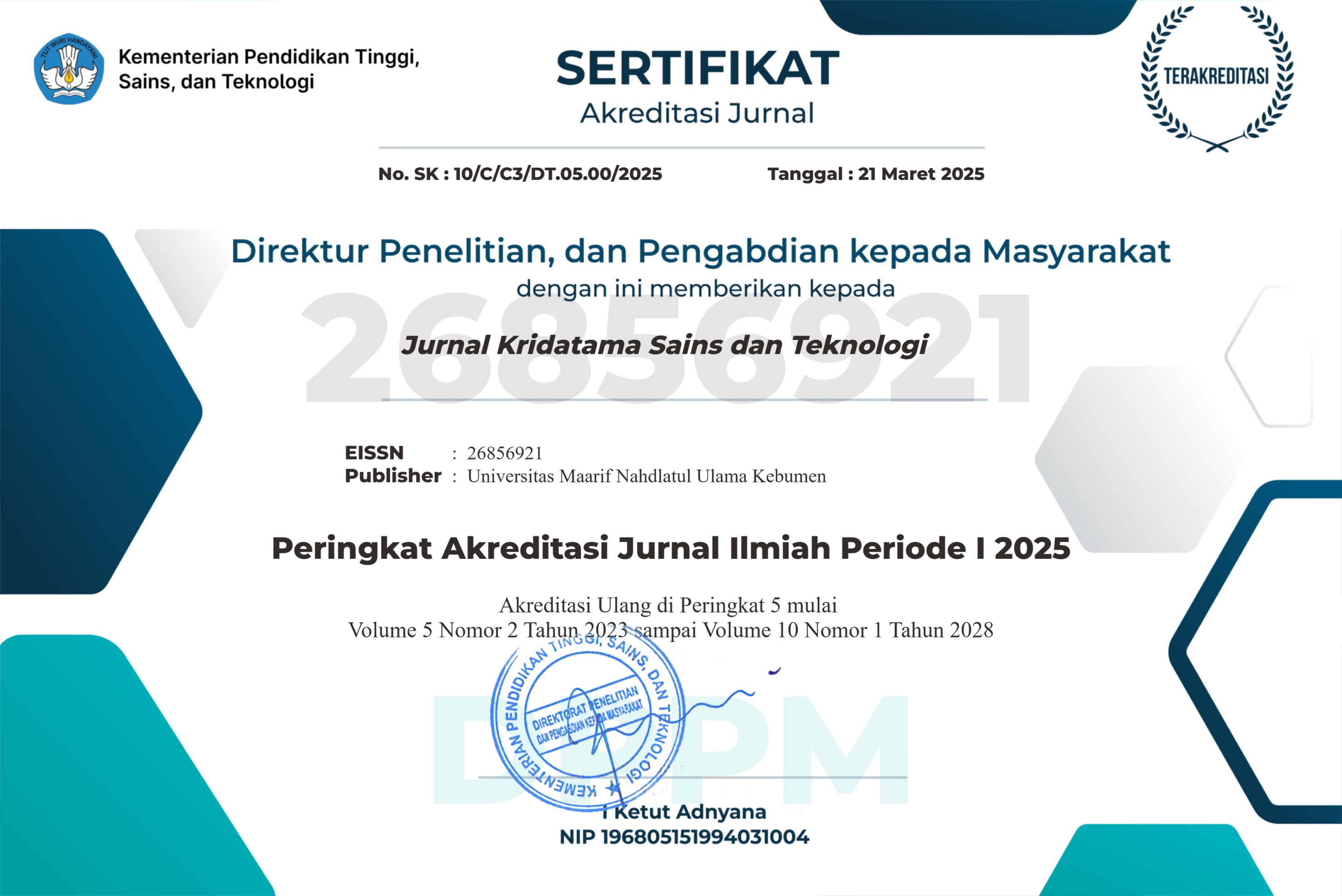Evaluasi Stabilitas dan Adaptabilitas Karakter Agronomi Kedelai (Glycine max L. Merrill) dalam Respon Interaksi Genotip dengan Lingkungan
DOI:
https://doi.org/10.53863/kst.v7i02.1837Keywords:
adaptability, genotype, interaction, soybean, stabilityAbstract
Soybeans are a strategic national commodity that plays an important role in food security. However, domestic production of high-quality soybeans remains low, leading to high dependence on imports. One strategy to reduce soybean imports is through a plant breeding program, which aims to produce high-yielding soybean varieties that can adapt well to various agroecological conditions. However, in practice, soybean breeders often face diverse soil conditions, which can cause instability in soybean performance. This study aims to evaluate the stability and adaptability of 14 soybean genotypes based on their phenotypic responses to three different environments. The parameters observed include plant height, flowering time, number of pods per plant, and number of seeds per plant. Analysis was conducted using the Eberhart and Russell stability model, considering the regression coefficient (bi), deviation from regression (Sd²), and standard error SE(bi). Results indicated significant genotype-environment interactions, reflecting the instability of some genotypes to changes in environmental conditions. The genotypes Detap 1, Detam 3 Prida, and Galur 122 showed high stability and broad adaptability across several agronomic traits, while the genotypes Wilis, Galur 106, and Devon 1 were classified as unstable with significant deviation values. Some genotypes, such as Anjasmoro and Devon 2, exhibited good stability but had more specific adaptability to certain environments. The results of this study provide a strong scientific basis for soybean variety selection, thereby improving land use efficiency, supporting consistent production planning, and reducing the risk of yield decline due to variety unsuitability to the growing environment
References
Abebe, A. T., Adewumi, A. S., Adebayo, M. A., Shaahu, A., Mushoriwa, H., Alabi, T., Derera, J., Agbona, A., & Chigeza, G. (2024). Genotype x environment interaction and yield stability of soybean (Glycine max l.) genotypes in multi-environment trials (METs) in Nigeria. Heliyon, 10(19). https://doi.org/10.1016/j.heliyon.2024.e38097
Adediran, B. O., Ayo-Vaughan, M. A., Ariyo, O. J., Sakariyawo, O. S., Aremu, C. O., & Ibitoye, D. O. (2023). Genotype by Environment Interaction in Soybean and its Implications for Crop Improvement. International Journal of Plant & Soil Science, 35(18), 162–173. https://doi.org/10.9734/ijpss/2023/v35i183280
Amogne, A. (2024). AMMI and GGE-biplot Analysis of the Yield Performance and Stability of Medium-Mature Soybean [Glycine max (L.) Merrill] Genotyped Plants in Southern and Northwestern Ethiopia. https://doi.org/10.21203/rs.3.rs-3956070/v1
Carvalho, M. P., Nunes, J. A. R., Carmo, E. L. Do, Simon, G. A., & Moraes, R. N. O. (2021). Adaptability and stability of conventional soybean by GGE biplot analysis. Pesquisa Agropecuaria Tropical, 51. https://doi.org/10.1590/1983-40632021v5167995
Evangelista, J. S. P. C., Alves, R. S., Peixoto, M. A., de Resende, M. D. V., Teodoro, P. E., da Silva, F. L., & Bhering, L. L. (2020). Soybean productivity, stability, and adaptability through mixed model methodology. Ciencia Rural, 51(2), 1–7. https://doi.org/10.1590/0103-8478cr20200406
Direktorat Statistik Tanaman Pangan, Hortikultura, dan Perkebunan. (2024). Analisis Produktivitas Jagung Dan Kedelai Di Indonesia The Analysis Of Maize And Soybean Yield In Indonesia (The Result Of Crop-Cutting Survey). Jakarta : Badan Pusat Statistik
Eberhart, SA. & WA. Russell. (1966). Stability Parameter for Comparing Varieties. Crop Science . 6:36-40.
Hallauer, AR. & JB. Miranda Filho. (1995). Quantitative Genetics in Maize Breeding. 2.ed. Ames: Iowa State University Press. Hossain, A. & JAT.
Li, H., Du, H., He, M., Wang, J., Wang, F., Yuan, W., Huang, Z., Cheng, Q., Gou, C., Chen, Z., Liu, B., Kong, F., Fang, C., Zhao, X., & Yu, D. (2023). Natural variation of FKF1 controls flowering and adaptation during soybean domestication and improvement. New Phytologist, 238(4), 1671–1684. https://doi.org/https://doi.org/10.1111/nph.18826
Majidian, P., Masoudi, B., Hezarjaribi, E., Razmi, N., Peyghamzadeh, K., & Gholizadeh, A. (2024). Deciphering genotype-by-environment interaction in new soybean lines based on multiple traits using different adaptability and stability methods. Food Science and Nutrition, 12(5), 3295–3308. https://doi.org/10.1002/fsn3.3996
Sundari, T., Nugrahaeni Balai Penelitian Tanaman Aneka Kacang dan Umbi, N., Raya Kendalpayak, J., & Pos, K. (2016). Interaksi Genotipe x Lingkungan dan Stabilitas Karakter Agronomi Kedelai (Glycine max (L.) Merrill) [Genotype x environment interaction and agronomic characters stability of soybean (Glycine max (L.) Merrill)].
Downloads
Published
How to Cite
Issue
Section
License
Copyright (c) 2025 Patimah Anjelina

This work is licensed under a Creative Commons Attribution-ShareAlike 4.0 International License.
Authors retain copyright and grant the journal right of first publication with the work simultaneously licensed under a Creative Commons Attribution-ShareAlike 4.0 International License that allows others to share the work with an acknowledgment of the work’s authorship and initial publication in this journal

















